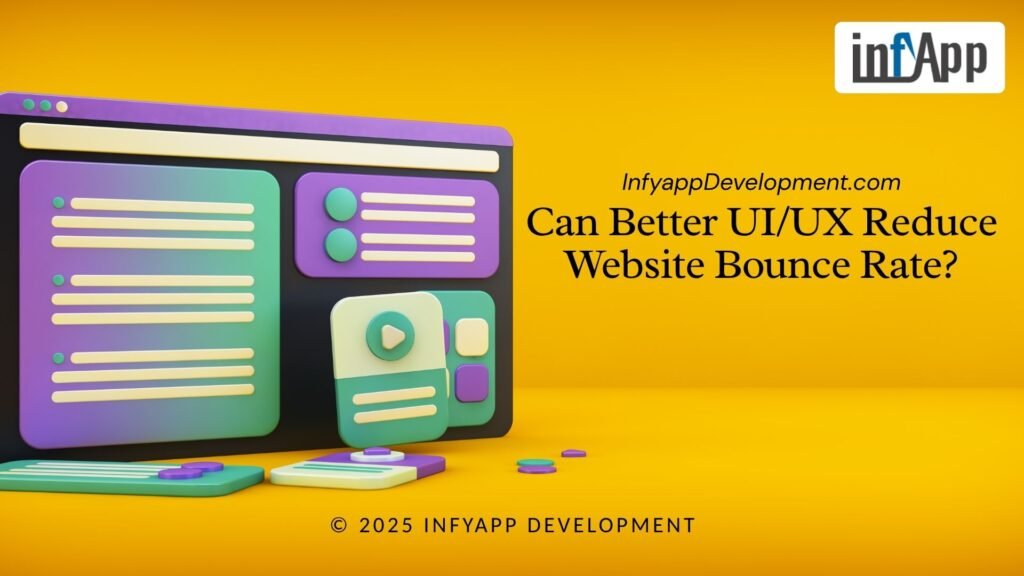Ever checked your website analytics and noticed people leave your site almost as fast as they land?
That’s called a bounce — and it’s a red flag for your website’s performance.
One of the most effective ways to fix it?
Better UI/UX design.
In this blog, we’ll explain how a good user interface (UI) and user experience (UX) can significantly reduce your bounce rate, keep visitors engaged, and help your site perform better overall.
🔄 What Is Bounce Rate?
Bounce rate is the percentage of users who visit a page on your site and leave without clicking anything or visiting another page.
A high bounce rate usually means:
- Your site didn’t meet their expectations
- The content wasn’t easy to understand
- The design or usability frustrated them
🎯 How UI/UX Design Affects Bounce Rate
✅ 1. Faster Load Time = Lower Bounces
Good UX includes performance optimization.
If your site takes more than a few seconds to load, users leave — especially on mobile.
👉 At InfyApp Development, we ensure that all our websites are lightweight, fast, and mobile-first.
✅ 2. Clear Layout and Navigation
Confusing menus or cluttered layouts overwhelm users.
Good UI design ensures:
- A clean layout with visual hierarchy
- Intuitive menus and easy navigation
- Clear CTAs (Call-to-Actions) that guide users forward
This helps users know what to do next — and keeps them from bouncing.
✅ 3. Mobile Responsiveness
Many users visit from smartphones.
A non-responsive design = instant exit.
Great UX design means:
- Tap-friendly buttons
- Optimized image sizes
- Mobile-specific layouts that look and work great
✅ 4. Readable Content & Scannable Design
People skim, not read.
User-friendly websites use:
- Headings and subheadings (H1, H2, H3)
- Bullet points and spacing
- Fonts that are easy to read on any screen
When content is easy to digest, users stay longer.
✅ 5. Visual Clarity and Consistency
A messy site feels untrustworthy.
A well-designed interface:
- Uses consistent colors and font styles
- Aligns branding across all pages
- Provides a smooth, distraction-free experience
This builds trust — and trust reduces bounce.
Frequently Asked Questions
Q1: What is a good bounce rate?
It depends on the type of website, but generally:
- 20–40% is great
- 40–60% is normal
- Above 70% may signal UX or content issues
Q2: Is bounce rate a ranking factor?
Not directly — but bounce rate affects engagement metrics, which Google uses to evaluate page quality and relevance.
Q3: How do I know if bad UX is causing high bounce rate?
Look for signs like:
- Users exiting quickly on mobile
- Pages with confusing layouts or poor CTAs
- Drop-offs after landing on product or service pages
A UX review can help — InfyApp can assist with that.
Q4: Does improving UI/UX guarantee a lower bounce rate?
Not automatically — but it makes a big difference.
Combine better UX with relevant content, fast performance, and clear messaging for best results.
✅ Final Thoughts
Yes — better UI/UX can absolutely reduce bounce rate.
By making your website easier to use, faster to load, and more visually appealing, you keep users engaged and guide them toward action.
At InfyApp Development, we design and develop websites that focus on user behavior — helping brands lower bounce rates and improve performance across devices.
📞 Want to lower your bounce rate and keep visitors on your site longer? Let’s optimize your UX.





